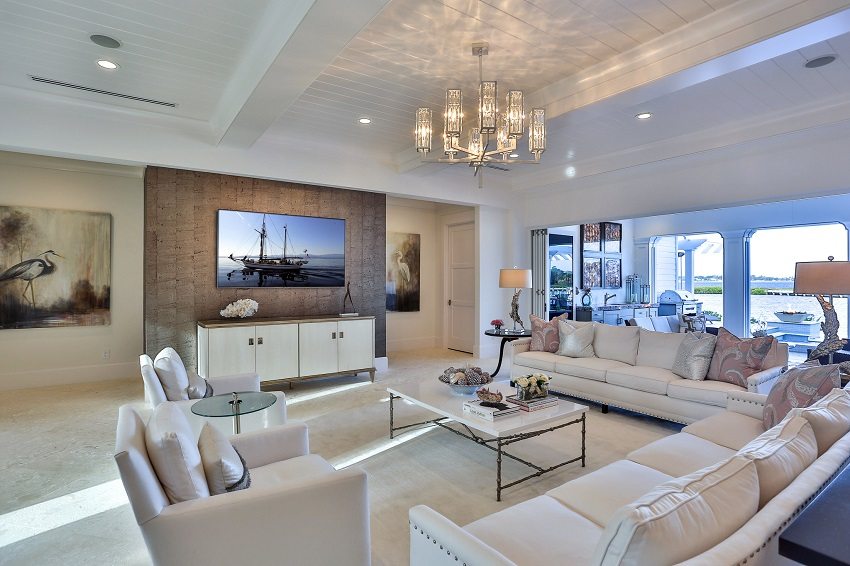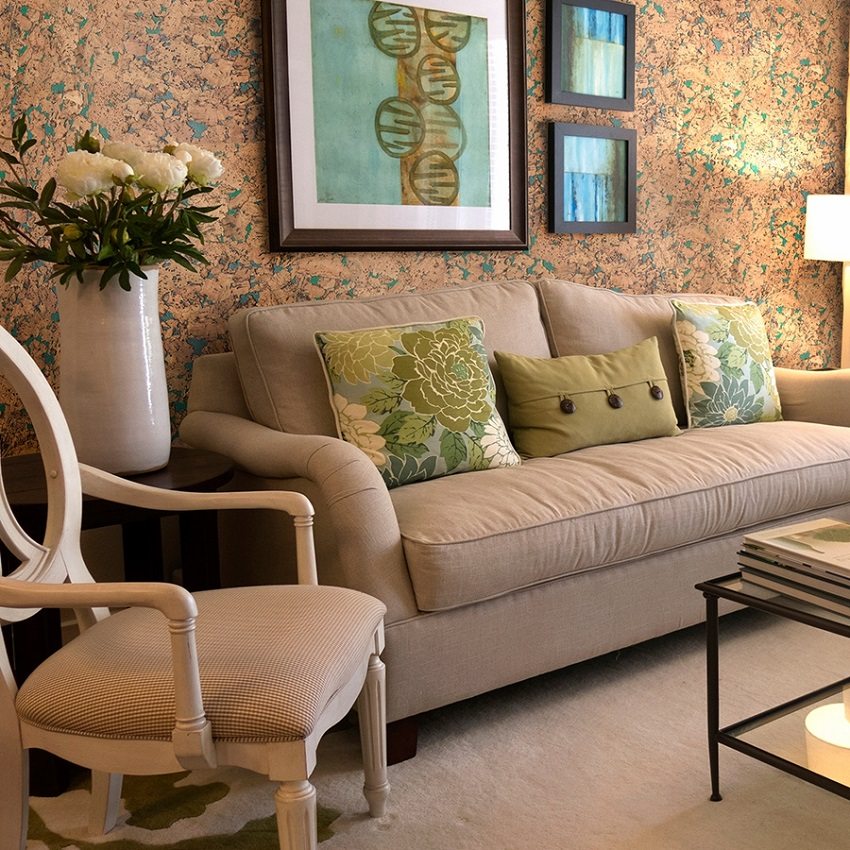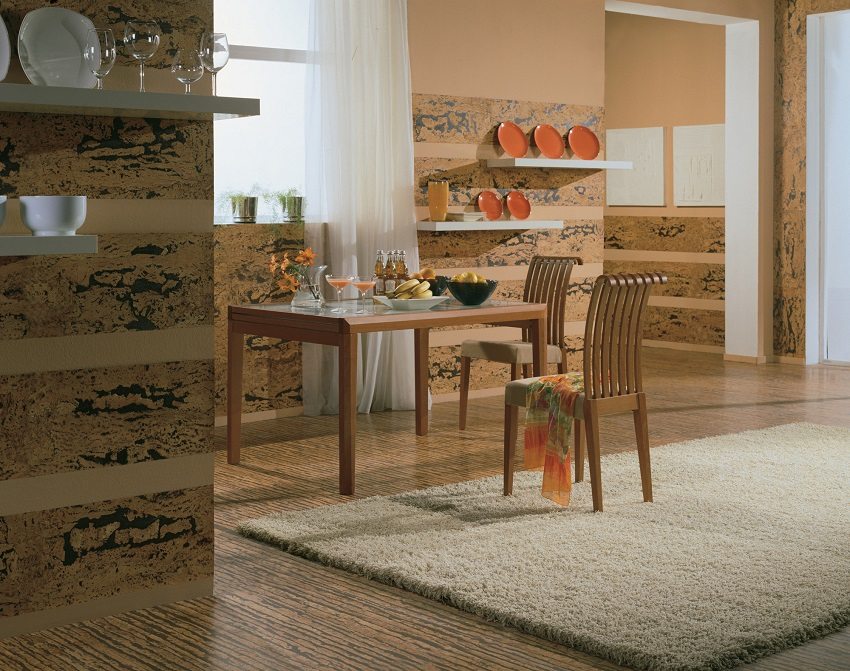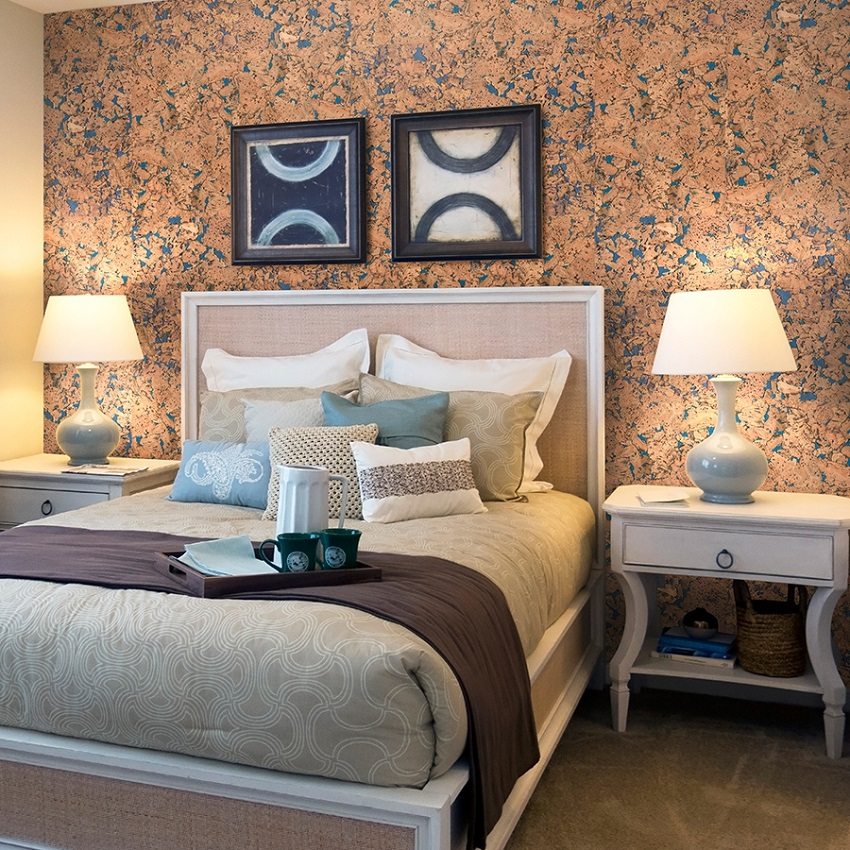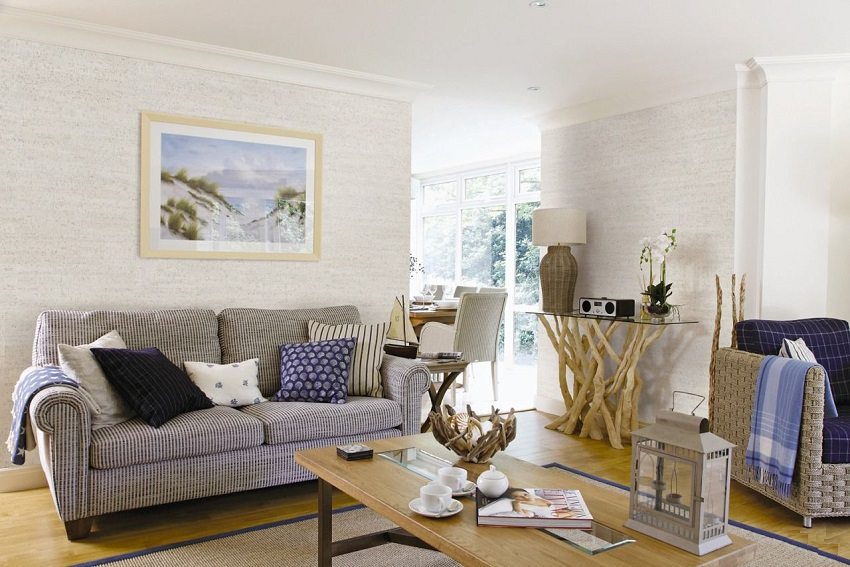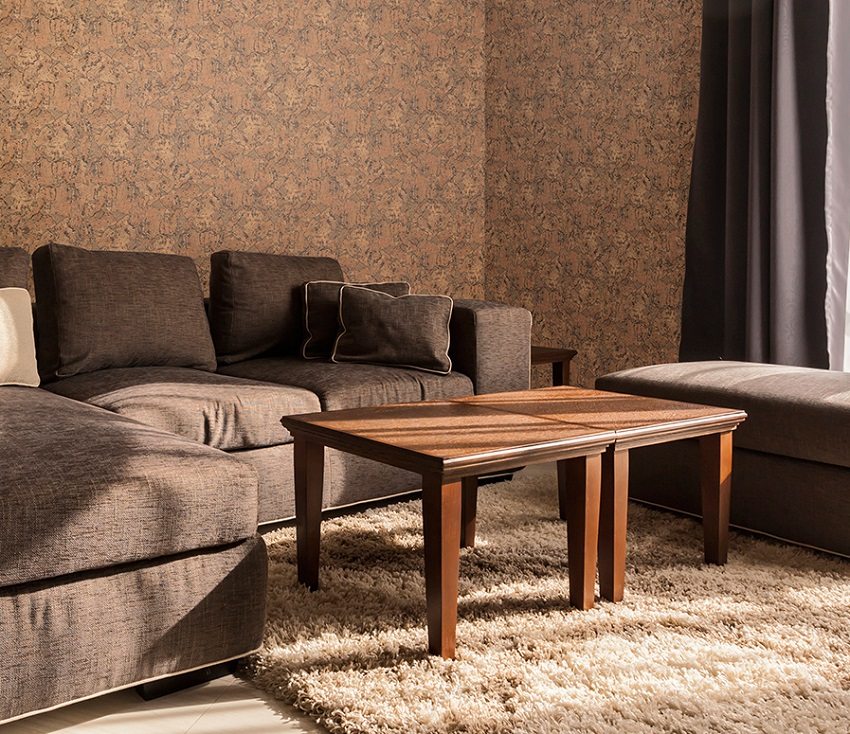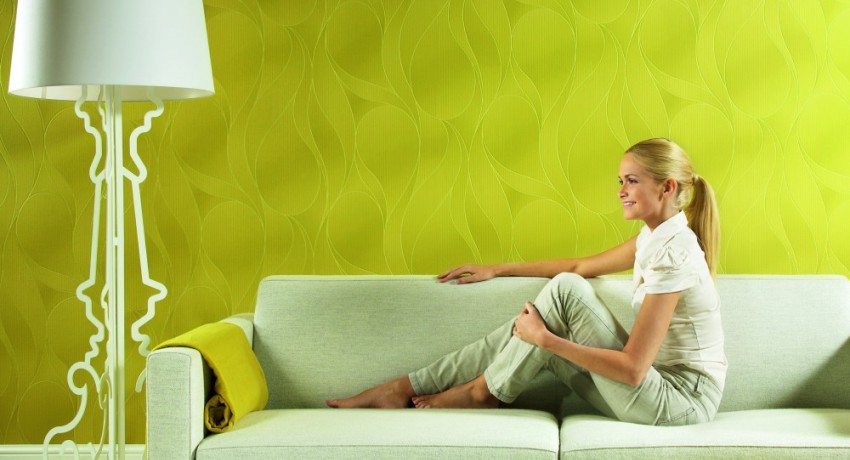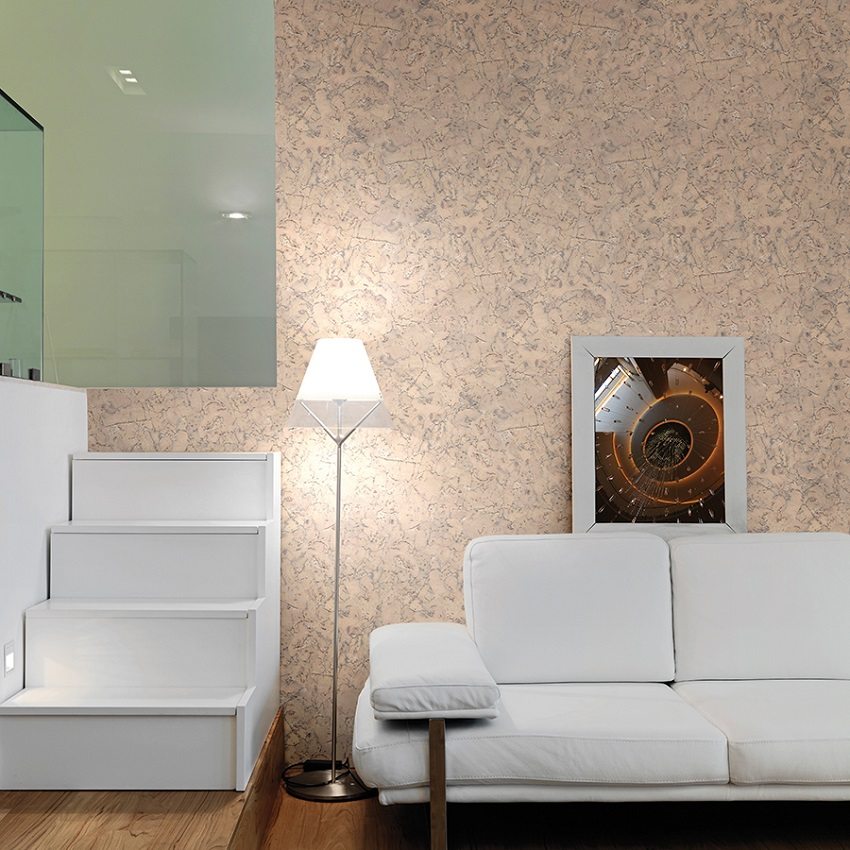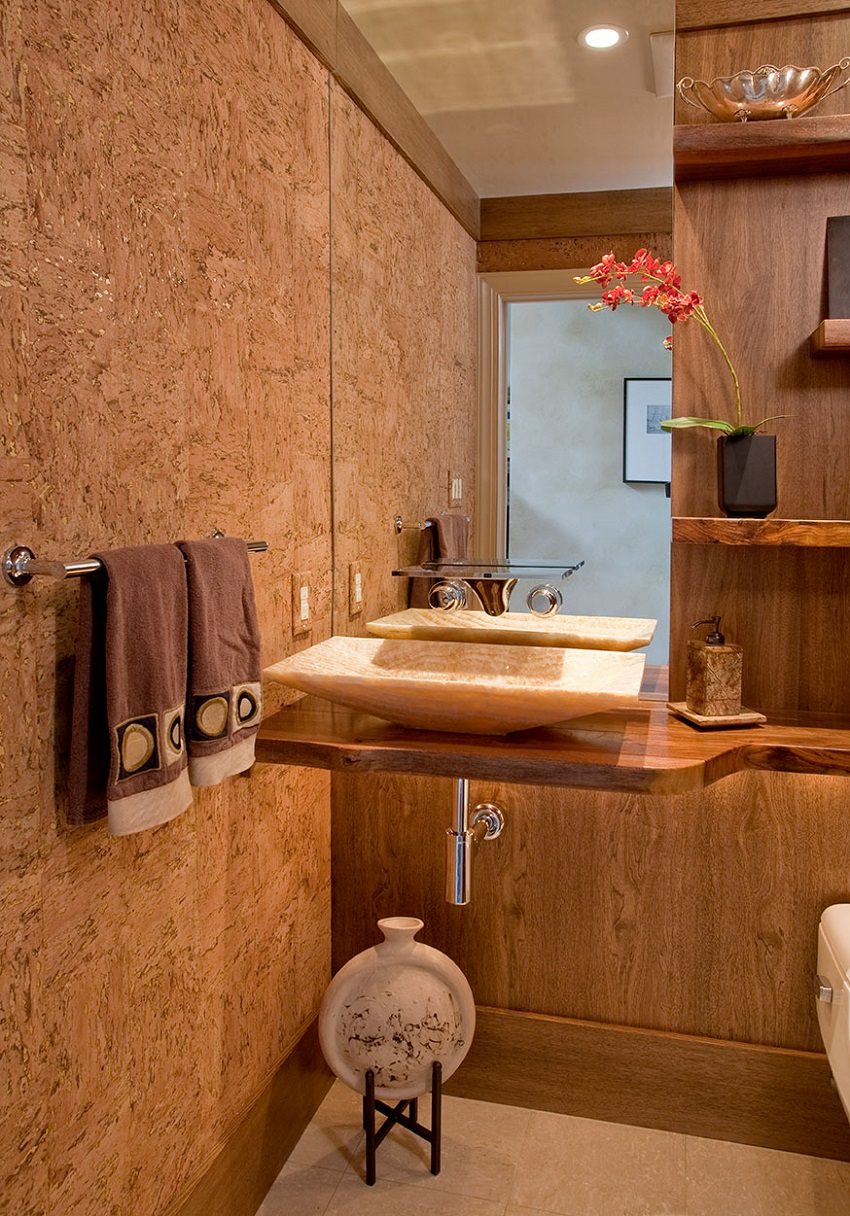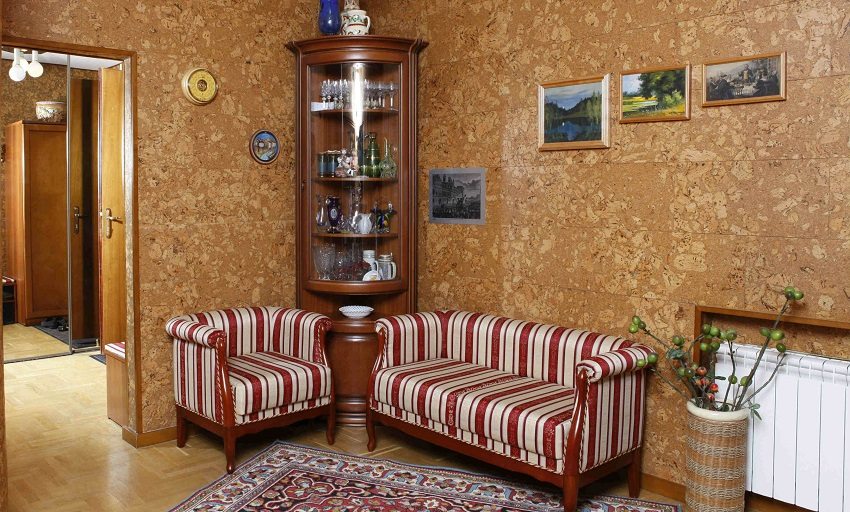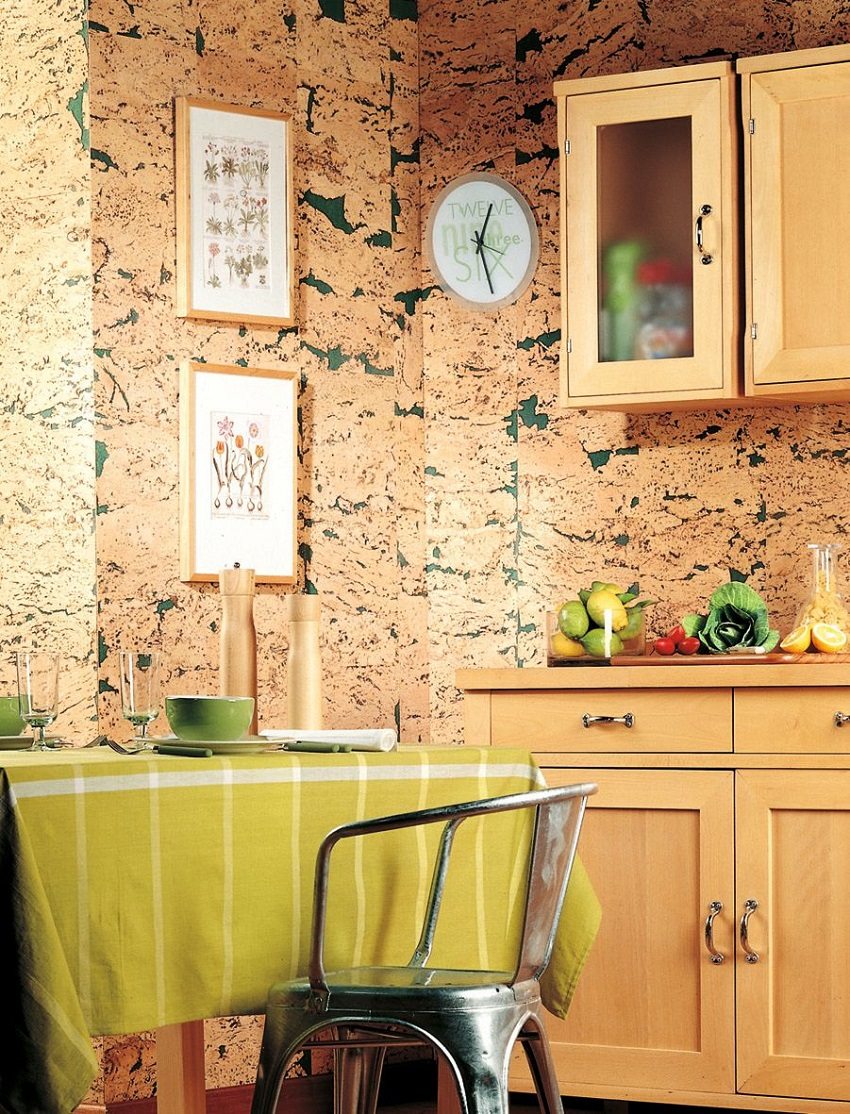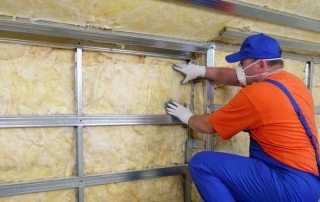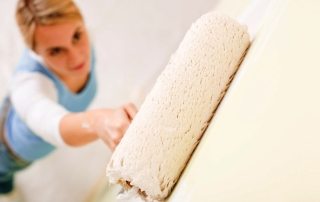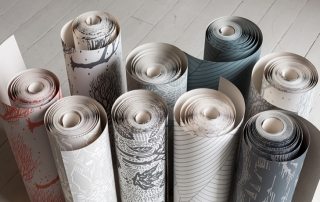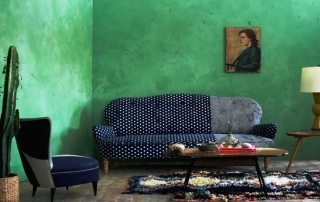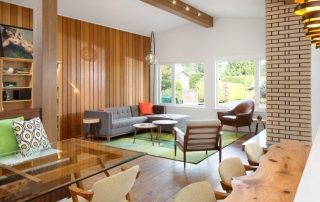Cork panels for walls have long been not a novelty in the domestic market of finishing materials. And yet, when renovating premises, they are used less often than the usual paper wallpaper or decorative plaster... The idea of decorating walls with cork panels is still perceived by many as exotic, despite all their advantages. What makes cork wallpaper stand out among other finishing materials?
Content [Hide]
Subtleties of the production of cork wall covering
The bark of cork oak is used in the manufacture of wallpaper. It is grown on special plantations in the western regions of the Mediterranean basin solely for the sake of cork.
The bark of this evergreen plant is incredibly light and resilient, which allows its products to quickly recover from strong compression. It does not transmit sound well, but retains heat well. Such unique qualities were in great demand in the production of finishing materials.
Interesting fact! Getting raw materials is a long process. The first layer of cork is removed from trees whose age reaches a quarter of a century. In the future, the bark from the oak is cut off every 9 years.
For the production of wallpaper, the bark is crushed and pressed at high temperatures. The resin released at the same time firmly sticks together small particles into a single whole. As a result, the bark is crushed and pressed at high temperatures for the production of wallpaper.
In the process of making decorative cork wall panels, a special backing is often used. It gives strength to the wallpaper.
What are the types of cork wallpaper for walls?
Depending on what kind of substrate was used (and whether it was used at all), there are several types of wallpaper:
- baseless - they are made only from cork, so they do not differ in great strength;
- wallpaper on a non-woven or paper backing - very flexible, thin and fairly easy to install;
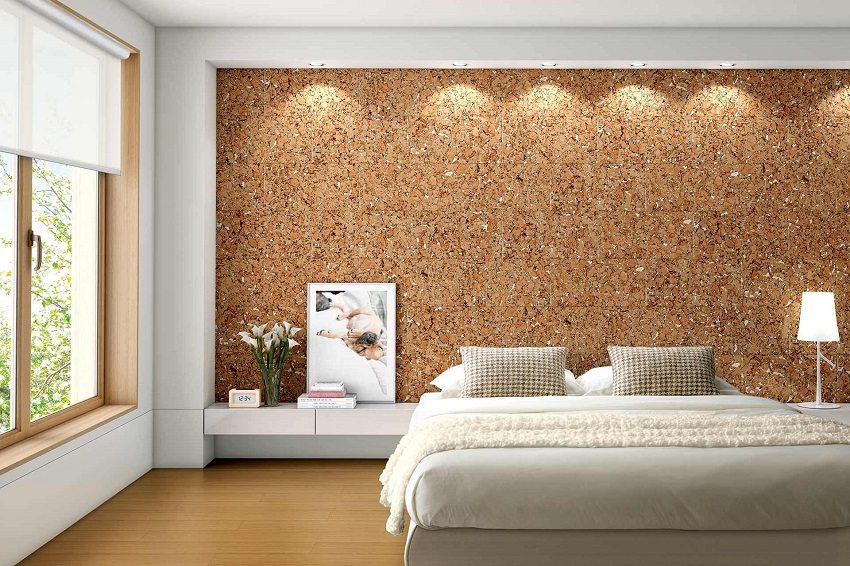
Bedroom decoration using cork panels
- panels in slabs - their cost exceeds the cost of cork rolls, but this is due to improved characteristics that make it possible to use this type of coating even in bathrooms;
- self-adhesive cork sheets - they are glued on Fiberboard, glass or painted surfaces.
To prevent cork wallpaper from absorbing unpleasant odors, moisture and being more resistant to damage, they are often impregnated with a special varnish composition or rubbed with wax.
The main pros and cons of cork wallpaper for walls
All the advantages and disadvantages of cork panels are directly related to the characteristics of the raw materials from which they are produced.
Pros of cork wallpaper
One of the main advantages of cork is its durability and strength. Such wallpaper can decorate walls for at least ten years. They do not fade and practically do not wear out, keeping the interior of the apartment in its original form throughout the entire period of operation.
Cork panels are not afraid of scratches and do not require difficult maintenance, do not electrify, do not accumulate dust and dirt, do not absorb odors, do not cause allergies. Due to the special bactericidal properties of oak, such wallpapers are resistant to the appearance of fungi and mold. They are not subject to fire and do not emit chemicals harmful to human health.
You can increase the level of noise insulation of walls with cork panels, reliably protecting the room from extraneous sounds. In addition, the heat-insulating properties of the material allow you to create a completely unique microclimate in the room: even in winter it will be warm in it, and cool in the heat. At the same time, the problem of wall insulation from the inside with cork panels is being solved.
Judging by numerous reviews, cork wall panels are not only practical, but also very beautiful, because they differ in a wide variety of colors and textures.
Important! Can be used such wall panels for interior decoration children's room, since they are completely safe, do not cause allergic reactions and may well withstand additional cleaning and harsh mechanical stress.
Cons of cork wallpaper
The main disadvantage of this type of finishing material is its high cost. The price of cork wallpaper for walls in rolls, photos of which look so attractive in magazines, can significantly exceed the average repair budget. This is not least due to the use of high-quality natural ingredients in their production.
The cork absorbs water and may deform the coating made from it. Therefore, for rooms with high humidity, it is worth choosing cork wallpaper treated with a special water-repellent compound.
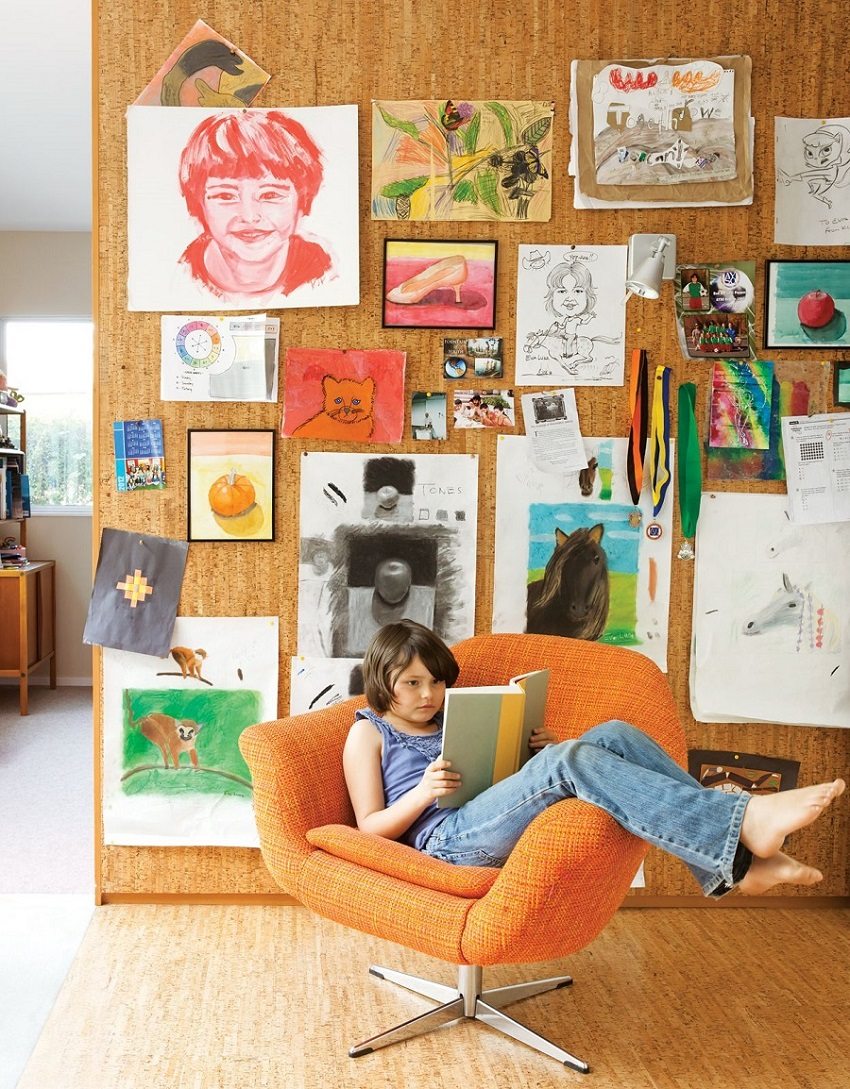
It is appropriate to use cork in the design of a children's room, as it is completely safe and does not cause allergies.
The installation of wallpaper itself is associated with certain inconveniences. To install them, you must very carefully prepare the surface and use special glue. Difficulties may arise later, when dismantling the panels. Since they are fastened very securely, it will not be easy to remove such wallpaper.
Cork Wall Panels: Simple Installation Tips
There are certain rules for gluing cork panels to walls. First of all, it is necessary to prepare the surface in the most careful way. It should be dry and perfectly flat, without roughness. First, you need to remove all remnants of the previous finish, fill up the cracks and level the walls with plaster. In addition, the surface should be primed and allowed to dry completely.
Cork rolls are cut and left for a while to straighten. Using a level on the wall, markings are made.
Related article:
|
What kind of glue to glue the panels to the walls depends on the type of cork. For cork wallpaper on a non-woven or paper base, use the same composition as for ordinary wallpaper.
The cork wall adhesive has a very thick consistency. Therefore, it must be applied with a comb or spatula, and often it is necessary to apply glue both to the wallpaper and to the wall.
You can stick the cork panel on the wall (the photo on the Internet describes this process in detail) alone. But in order to cope with cork wallpaper, you need help. They must be firmly pressed against the surface, while leveling them with a roller to prevent air bubbles from forming. If it was not possible to avoid this, it is better to pierce the bubble with an awl. Glue the wallpaper back to back, carefully removing the excess with a knife. Using a knife, the glue that has emerged at the joints is also removed.
Allow the cork panels to dry. It will take three days, and the doors and windows to the room must be closed.
To facilitate the installation process and avoid the most common mistakes, you can watch a video on the Internet: "How to glue cork panels on walls".
Useful advice! To avoid deformation of cork rolls after pasting the walls, they must be given time to proof. To do this, they are brought into the room before the start of the repair, unpacked and left for a couple of days.
Cork wallpaper in the interior of a modern apartment
Wall decoration with cork panels, photos of which can be found on the Internet, allows you to create a truly unique and beautiful design. A wide variety of types and colors will easily allow you to embody any design idea.
Most often, the color of the wallpaper is painted in natural tones, reminiscent of wood. These are various shades from pale yellow to deep brown. But often on sale there are cork panels for walls with white, gray, green, reddish, blue blotches.
A wonderful effect can be achieved by gluing different shades of cork wallpaper in the form of a mosaic, a repeating pattern or a whole composition.
Photos of cork panels for walls in the interior clearly demonstrate that such a coating will look best in rooms made in a rustic (country) or ethnic (Japanese or Mediterranean) style, as well as in a country house.

